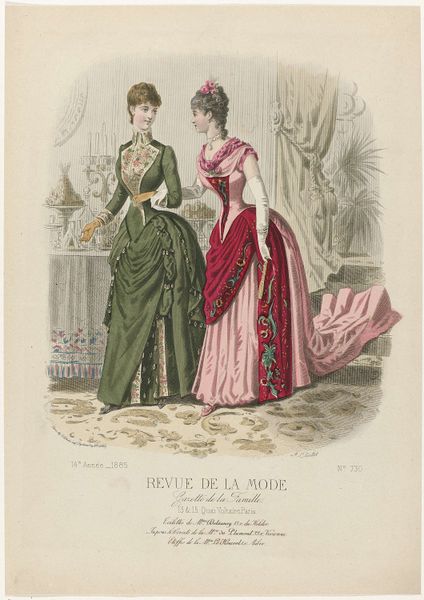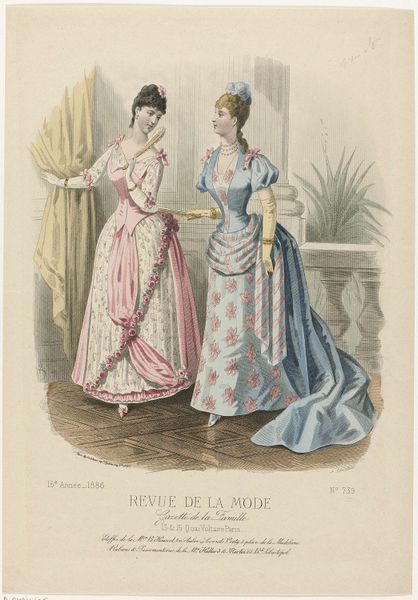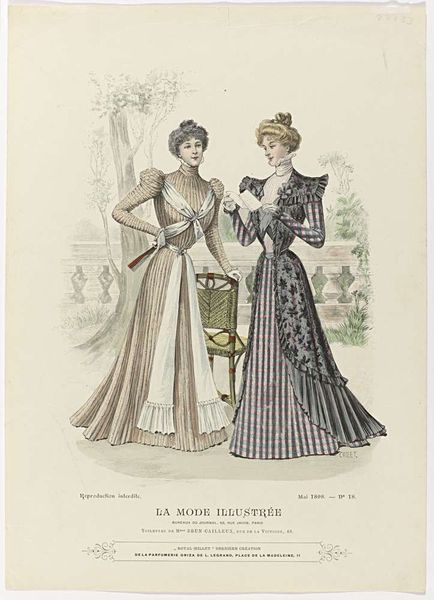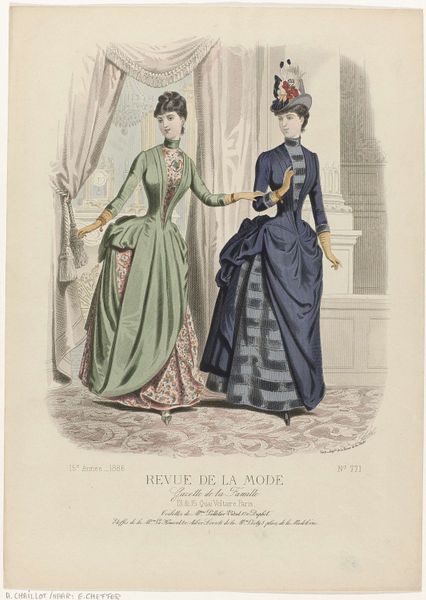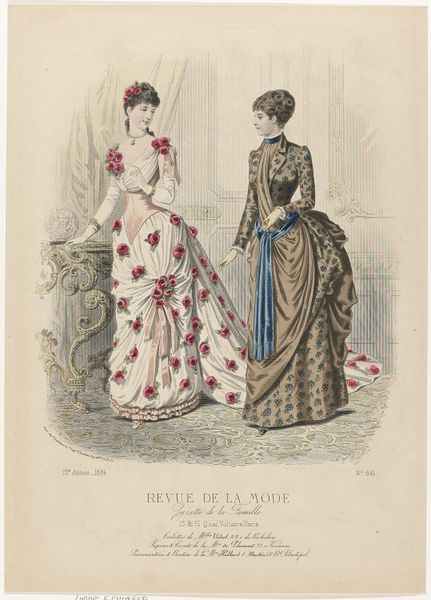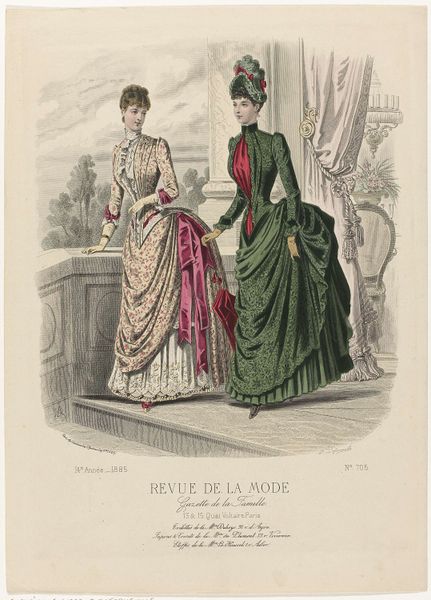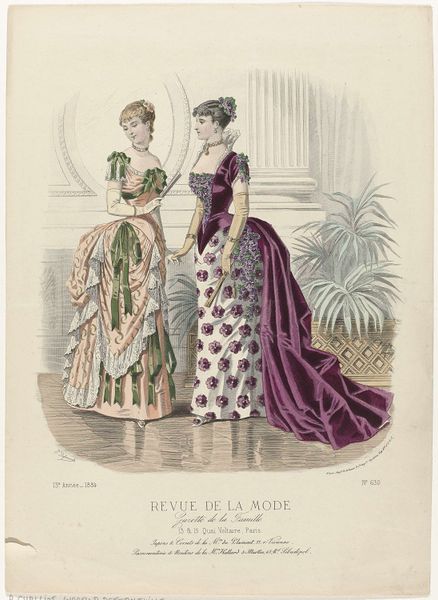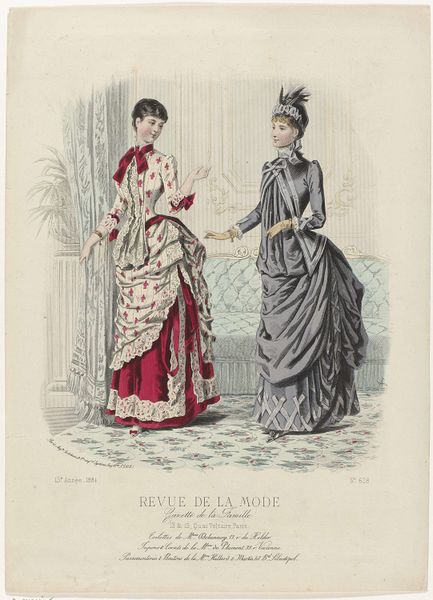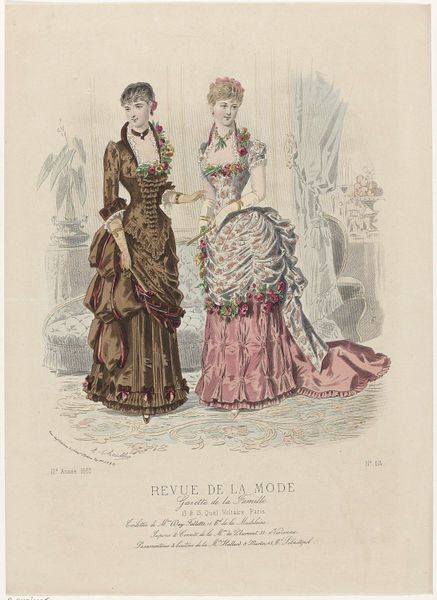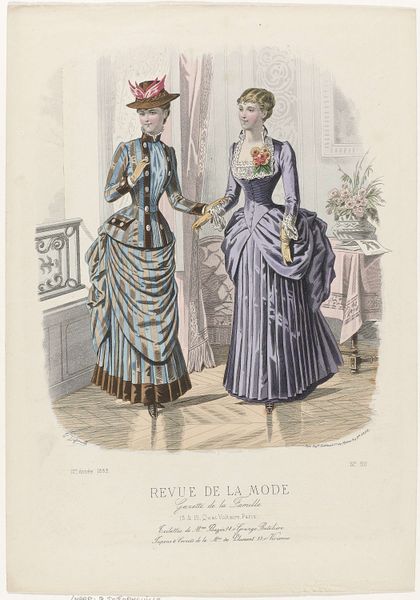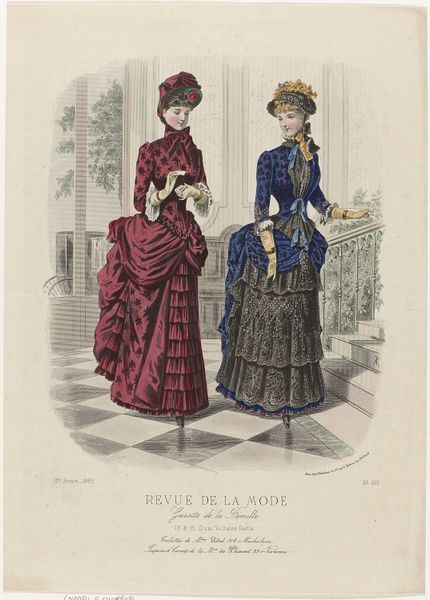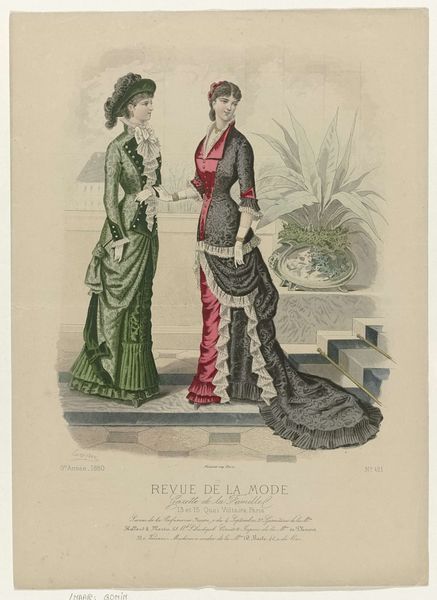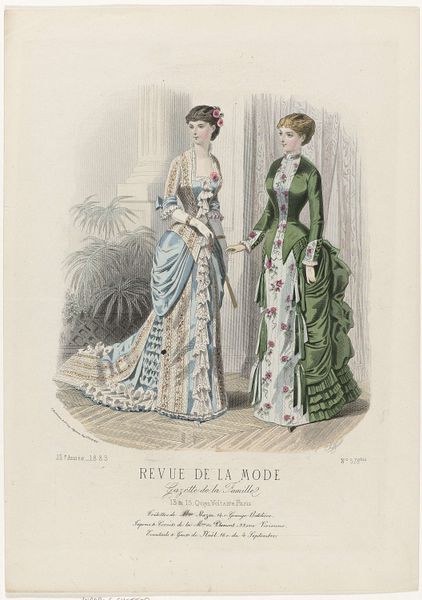
Revue de la Mode, Gazette de la Famille, 20 novembre 1887, 16e Année, No. 829: Passementeries & Rubans (...) 1887
0:00
0:00
#
portrait
#
16_19th-century
# print
#
historical fashion
#
decorative-art
#
watercolor
Dimensions: height 375 mm, width 268 mm
Copyright: Rijks Museum: Open Domain
Editor: This is "Revue de la Mode, Gazette de la Famille," a print from 1887 by an anonymous artist. It shows two women in elaborate dresses; it's striking how much the image focuses on fashion and luxury. What catches your eye in this piece? Curator: The immediate draw is the hyper-femininity, a deliberate construction reinforced by both dress and setting. But let's consider the title, essentially a fashion and family gazette. Who was this imagery meant for, and what values were being reinforced? How does fashion function as a visible marker of class and, by extension, power? Editor: So you're suggesting that it is less about the beauty and more about what it communicates about society? Curator: Precisely. These gazettes were instruments. While ostensibly about fashion, they served to reinforce a particular model of bourgeois femininity, deeply intertwined with ideas of domesticity and decorum. What about the composition? The woman interacting with the bird seems posed, almost captive within her own elaborate presentation. Editor: I see that now. It’s like the birdcage mirrors her own situation, constrained by fashion and social expectations. So, it's not *just* about pretty dresses, but about the roles women were expected to play? Curator: Absolutely. It highlights how deeply enmeshed fashion was, and remains, with broader social and political structures. We should ask, whose freedom is being prioritised here and at whose expense? Editor: I never considered the social commentary inherent in a fashion print! Thanks, that's really broadened my perspective. Curator: Indeed. By viewing these images critically, we gain insights into the historical forces that shaped our own contemporary understanding of gender, identity, and representation.
Comments
No comments
Be the first to comment and join the conversation on the ultimate creative platform.
